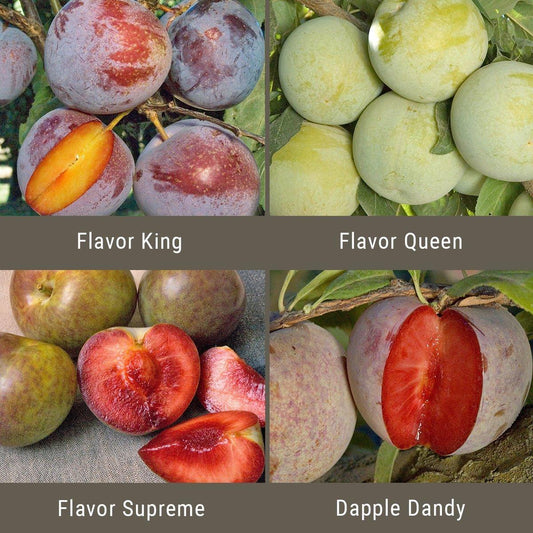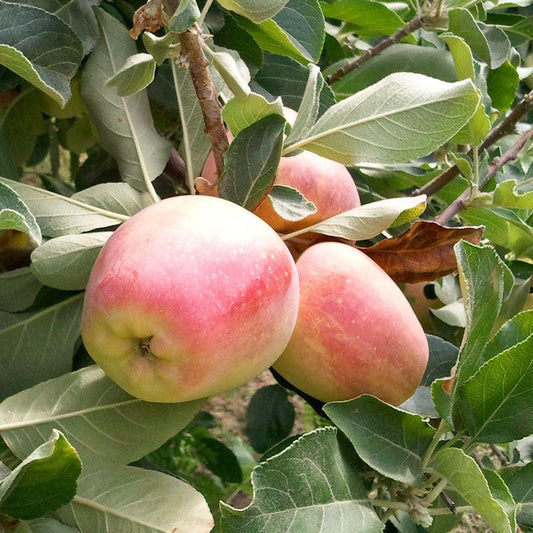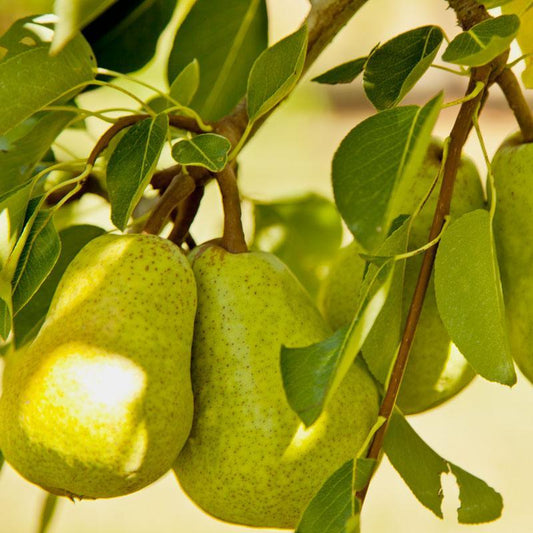Thinking about a buying a fruit tree? Start here! Tricia helps you make an informed decision when it comes to picking a fruit tree variety.
Hi, I'm Tricia, a California organic gardener. I love my fruit trees. They're beautiful and they give me box after box of delicious fruit!
If you're considering planting fruit trees in your yard this year, I'm ready to share my tips on which varieties to choose! The first step in choosing your fruit tree is to determine your USDA zone and the number of chill hours in your area.
Chill hours are the number of hours below 45 degrees that your area will have during the dormant season. You can find out your chill hours by contacting your Master Gardeners or local Ag. extension.
Once you know your chill hours, then you can choose your fruit varieties. If you choose a variety that requires more chill hours than what your area has, you may not even get any fruit. On the other hand, if you choose a variety that requires 300 chill hours, you have 800 chill hours, more than likely the tree's gonna break dormancy too early, and then you're gonna have either frost damage or the tree could die.
The exception are fig trees - they only need 100 chill hours, but they're hardy down to 15 degrees below zero, and if they get killed by the frost on the top, they'll grow back from the roots next year. The challenge with figs is choosing a variety suited to the summer heat you get. For example, White Genoa figs do well in cool coastal areas, on the other hand Flanders figs need a nice hot climate in order to produce the best flavor.
Pay attention to where you'll plant your tree. Micro climates are important! You'll get a lot more cold air if you plant with a northern exposure, or in a little valley, and you'll get more warm air if you plant your tree with a southern exposure or close to the house.
Citrus doesn't normally do well here, but these blood oranges are doing pretty well since I planted them so close to the house. Another thing to consider is a pollinizer.
Most apple trees, for example, require another apple tree planted within 50 feet that blooms at the same time in order to bear fruit. This big apple tree was on the property when we purchased it, but we never got any fruit until we planted our orchard and planted another apple tree. Now look at it!
If you don't want to plant multiple fruit trees for pollination, consider a multi-grafted fruit tree, like this cherry. These trees have multiple varieties that pollinate each other grafted onto the same rootstock. Multi-grafts are also a fantastic solution for limited space.
Another option is to plant 3 fruit trees in the same hole, you'll get the same effect as the multi-graft! Consider the space you have in your garden. Can you accommodate an 18 foot semi dwarf or a 40 foot standard tree? Or is a 10 foot dwarf tree more suitable for your space?
Keep in mind that by pruning you can keep a tree to any height, and espalier pruning takes up even less space. There are different harvest times for different varieties of fruit trees, so the question to ask is do you want all your fruit to ripen at the same time for preserving?
Or do you want to stagger the harvest times for a constant supply of fresh fruit? Don't guess about harvest times. This awesome online harvest chart available at GrowOrganic.com lists virtually all varieties and their harvest dates.
Check it out before making your selection. If you have diseases that are prevalent in your area, you can choose varieties that resist those diseases. For example, the peach leaf curl resistant Indian Free peach, or the blight resistant Warren pear.
So you figured out what varieties do well in your area, the pollination, the size of the tree, the time it ripens, now it's time to consider some special characteristics that you want. Are you going to want to harvest a good baking apple, or a winter storage apple? And what about peaches? Do you want a peach that's good for canning or perhaps one you can eat right off the tree?
Think about what you want and make the decision on what tree to plant. It makes sense to plant fruit tree varieties whose fruit are either commercially unavailable or expensive to buy, like these Hachiya persimmons. Please consider planting a heritage variety of fruit, some of these varieties are in danger of disappearing and by planting them in your garden or orchard you can help preserve some vanishing varieties!
Have a lot of fun choosing your fruit tree varieties! I hope this information will help you make the best decision, so plant your fruit trees, and Grow Organic for Life!








